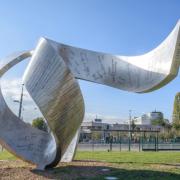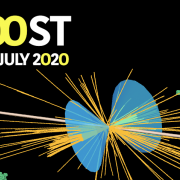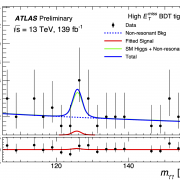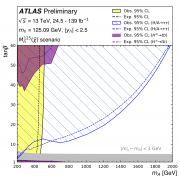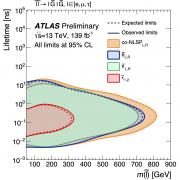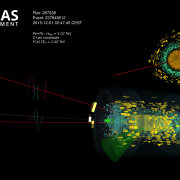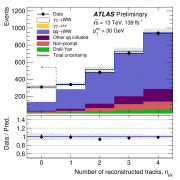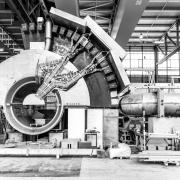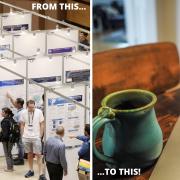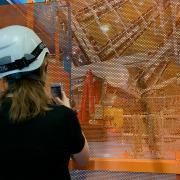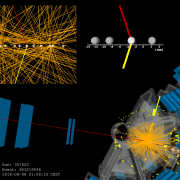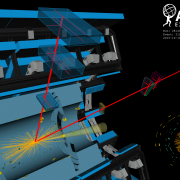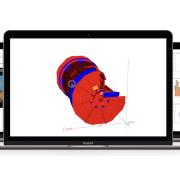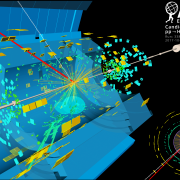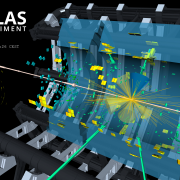Access to Collaboration Site and Physics Results
Updates tagged: “Physics Results”

ATLAS searches for double Higgs production
The Brout-Englert-Higgs (BEH) mechanism is at the core of the Standard Model, the theory that describes the fundamental constituents of matter and their interactions. It introduces a new field, the Higgs field, through which the weak bosons (W and Z) become massive while the photon remains massless. The excitation of this field is a physical particle, the Higgs boson, which was discovered by the ATLAS and CMS collaborations in 2012.
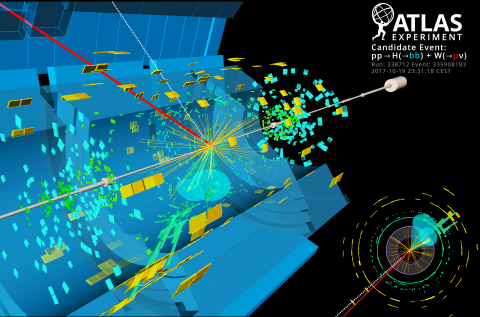
ATLAS observes elusive Higgs boson decay to a pair of bottom quarks
The ATLAS Collaboration at CERN’s Large Hadron Collider (LHC) has – at long last – observed the Higgs boson decaying into a pair of bottom (b) quarks. This elusive interaction is predicted to make up almost 60% of the Higgs boson decays and is thus primarily responsible for the Higgs natural width. Yet it took over six years after the 2012 discovery of the Higgs boson to accomplish this observation.
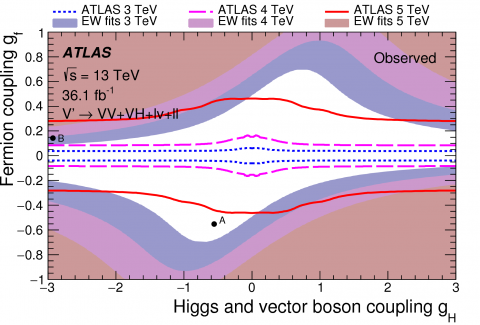
Stronger together: combining searches for new heavy resonances
While the Standard Model has proven tremendously successful, much experimental evidence points to it not being a complete description of our universe. The search for “new physics” is therefore an important component of the ATLAS experimental programme, where a number of analyses are looking for signs of new heavy particles decaying to different final states. Though these searches have not yet found a significant signal, they have allowed physicists to place stringent constraints on different new physics scenarios. These can be further tightened by combining different analysis channels and approaches.
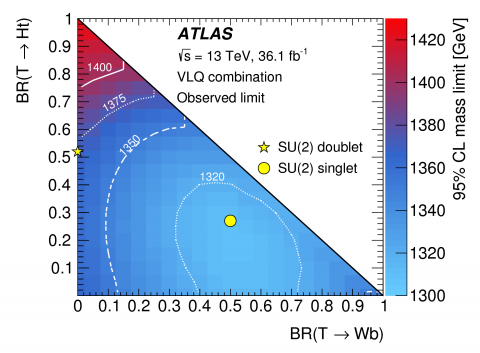
Could a new type of quark fix the “unnaturalness” of the Standard Model?
While the discovery of the Higgs boson at the Large Hadron Collider (LHC) in 2012 confirmed many Standard Model predictions, it has raised as many questions as it has answered. For example, interactions at the quantum level between the Higgs boson and the top quark ought to lead to a huge Higgs boson mass, possibly as large as the Planck mass (>1018 GeV). So why is it only 125 GeV? Is there a mechanism at play to cancel these large quantum corrections caused by the top quark (t)? Finding a way to explain the lightness of the Higgs boson is one of the top (no pun intended) questions in particle physics.
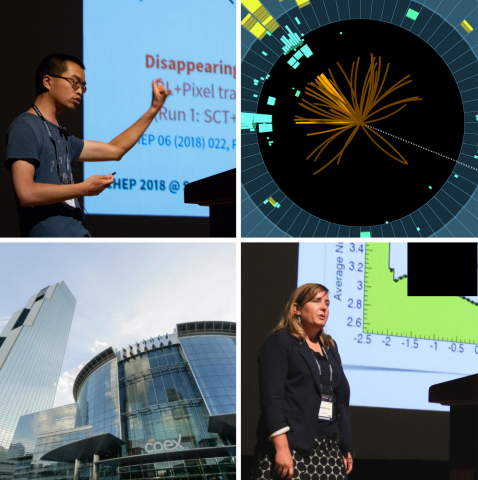
ATLAS reveals key results at ICHEP 2018
Feynman. Salam. Weinberg. For the past 50 years, the International Conference on HighEnergy Physics (ICHEP) has been the meeting place of giants in the field. Now, a new type of giant dominates: the thousands-strong collaborations of Large Hadron Collider (LHC) physicists.
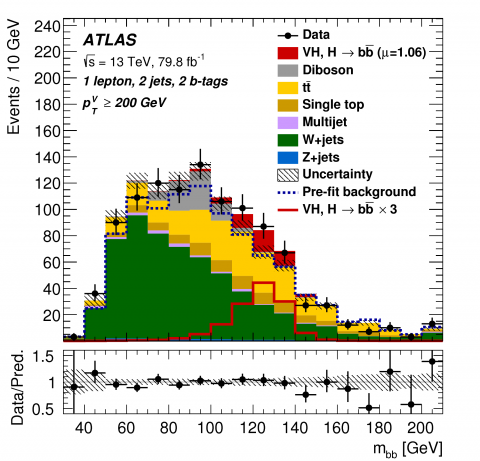
Higgs boson observed decaying to b quarks – at last!
Today, at the 2018 International Conference on High Energy Physics in Seoul, the ATLAS experiment reported a preliminary result establishing the observation of the Higgs boson decaying into pairs of b quarks, furthermore at a rate consistent with the Standard Model prediction.
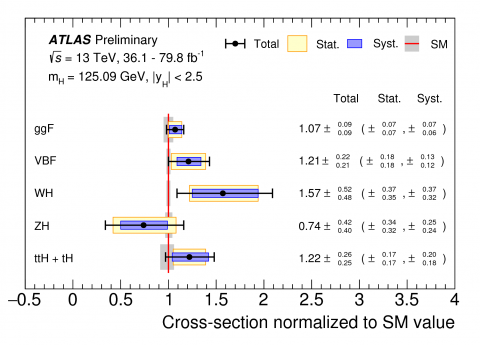
Combined measurements of Higgs boson couplings reach new level of precision
Higgs boson couplings manifest themselves in the rate of production of the Higgs boson at the LHC, and its decay branching ratios into various final states. These rates have been precisely measured by the ATLAS experiment, using up to 80 fb–1 of data collected at a proton-proton collision energy of 13 TeV from 2015 to 2017. Measurements were performed in all of the main decay channels of the Higgs boson: to pairs of photons, W and Z bosons, bottom quarks, taus, and muons. The overall production rate of the Higgs boson was measured to be in agreement with Standard Model predictions, with an uncertainty of 8%. The uncertainty is reduced from 11% in the previous combined measurements released last year.
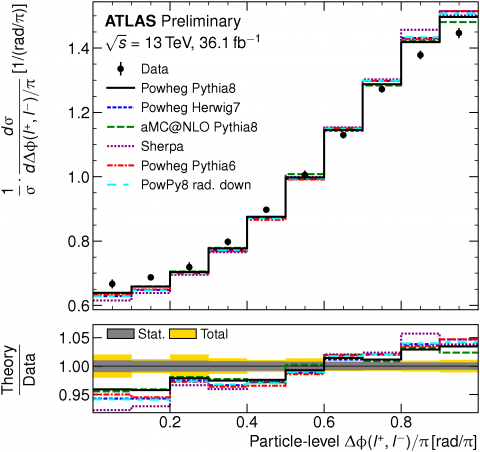
Precision leads to puzzles
The top quark is a unique particle due to its phenomenally high mass. It decays in less than 10-24 seconds, that is, before it had time to interact with any other particles. Therefore many of its quantum numbers, such as its spin, are transferred to its decay particles. When created in matter-antimatter pairs, the spins of the top quark and the antitop quark are expected to be correlated to some degree.
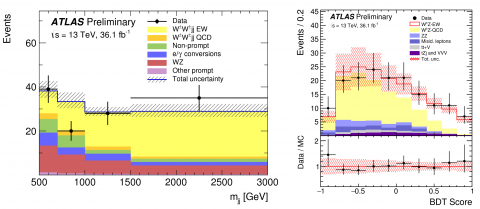
Quarks observed to interact via minuscule “weak lightsabers”
Two among the rarest processes probed so far at the LHC, the scattering between W and Z bosons emitted by quarks in proton-proton collisions, have been established by the ATLAS experiment at CERN.
.png%3Fitok=O0fwrfnR)
Summary of new ATLAS results for ICHEP 2018
The 2018 International Conference on High Energy Physics (ICHEP) kicked off this week in Seoul, South Korea. The ATLAS Collaboration will be unveiling a wide range of new results at ICHEP 2018, including major developments in the measurement of Higgs boson properties, observations of key electroweak production processes, new high precision tests of the Standard Model, and combinations of searches extending the reach to new physics.


